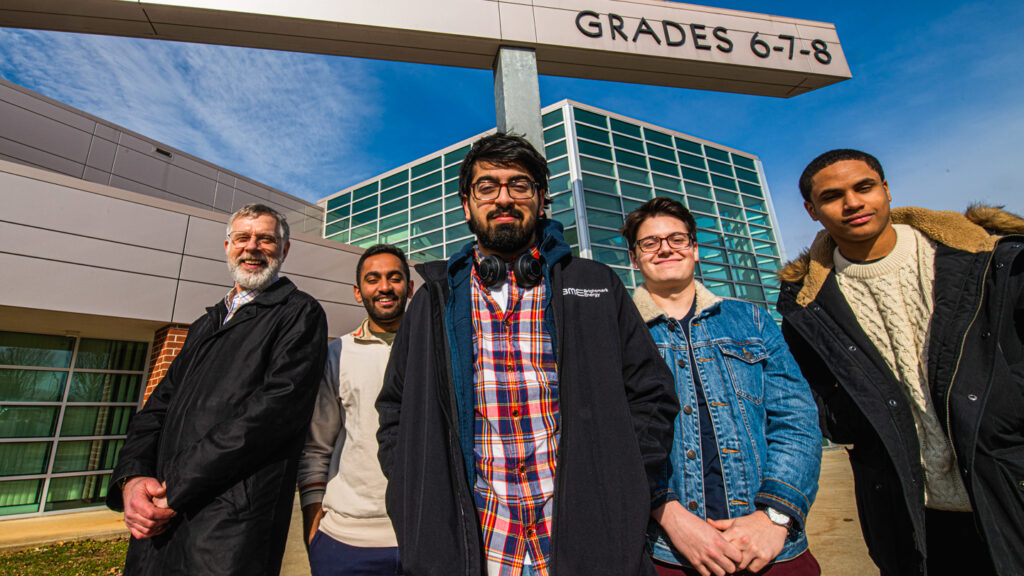Developing Quantitative Literacy More Equitably
The cost of a Lafayette College education keeps rising every year, and the actual cost to the student and family becomes harder to suss out as financial aid, loans, and creative financing become ever more prevalent and intricate.
Is attending Lafayette worth its cost? Students should be able to grapple with this sort of question. It’s an example of quantitative literacy problems that pervade society.

Rob Root (L-R), professor of mathematics, with Sidharth Vijay ’21, Anshuman Mishra ’21, Nicholas Hatala ’23, and Matthew Diaz ’23
“How should I plan for retirement?” “Should I pursue this medical treatment?” “Will this government policy improve my life?”
These questions are difficult to render precisely. What costs associated with attending Lafayette do I want to consider? Should I include the income I lose by becoming a student rather than working? How about the value of my work around the family home that is lost when I leave for college? What about the value I place on friendships that will atrophy?
In the same way, consider what value is added. The income available to a Lafayette graduate varies considerably by major; which ones are under consideration? Should the value of my ability to make better life choices through my Lafayette education be included in the analysis? What about self-respect gained from the ability to contribute to society in a desired way?
As this thought experiment shows, problems of quantitative literacy have both numerical and emotional facets. They are ubiquitous, and there are many policies that rest on the assumption that an individual knows their own interests better than anyone else. There are also many marketing strategies that depend on human frailties in making such decisions. Usually, making wise choices requires us to engage in some extended quantitative reasoning and then resolve our emotional response to the answers we find.
Where do we learn how to make such life-altering decisions? Typically not in math class. Instead we usually learn from family and friends, and as a result, quantitative literacy tends to be distributed unevenly. If our parents and friends have strong skills, we tend to develop them ourselves. If not, we are often not good at making such involved decisions, and we are easy prey for marketing strategies that exploit our inabilities.
If we want a society where people can discern their own best interests and pursue them intelligently, we need to work toward developing quantitative literacy more equitably. Toward this end, students in the First-Year Seminar “The Mathematics of Social Justice” make weekly visits to fifth, sixth, seventh, and eighth grade math classrooms in Easton. They get to work with pupils learning crucial mathematical ingredients of quantitative literacy. They learn what pupils care about and how they are thinking about the math they are being taught.
The culmination of the course is a presentation Lafayette students make to motivate pupils to continue to engage with math. These presentations and relationships formed between Lafayette students and middle school pupils in preparation for them are transformative. Our students come to see the depth and significance of mathematical thinking. As many of them vigorously scale the heights of advanced math, they are reminded of the ubiquity and power of arithmetic, and the power of mathematical thinking in navigating life. Every year a few middle schoolers who had been on a downward trajectory in math change their attitudes. They see new reasons to care about what they are being taught, find a way to fill in their gaps in understanding, and become engaged students of mathematics. This is generally not the result of a compelling classroom presentation, but of a friendship with a Lafayette student who inspires renewed attention and effort.